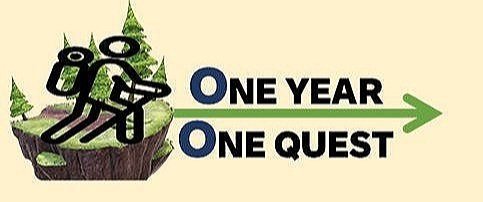September 29
Drizzle all day long. Made for a lot of red mud sticking to my shoes at John Day Fossil Beds NMon. I began at the Painted Hills unit. Iron has played its colorful magic on this land for 40 million years. The reddest sections of the hills, buttes, and formations were formed during wetter periods of time, while yellow and tan colors indicate drier conditions. The NPS can use the changing color patterns to determine the time-frame of the plants and animals which lived here. This area is a utopia of fossils. None can be seen on any of the trails in the park, but the VC has plenty of specimens to show what is out there underground. Did you know camels roamed this territory? That is what Thomas Condon discovered. John Day was one of the first white men to scout and trap in this area, only a few years after Lewis and Clark completed their epic journey. The park is named after Day, but Condon is the man who put this area on the map due to his extensive paleontological finds.
The Painted Hill and Sheep Rock units are both off route US 26, though about 40 miles apart. The VC is at Sheep Rock. A ranger at the VC said today was the best kind of day to see the deepness of the colors at Painted Hills, since the sun was not shining through. The lab at the VC seemed to have all the fun tools a paleontologist needs to perform their work. Jennifer Cavin, the park’s Fossil Preparator, was not in the room at this point in time. I remember seeing something similar at Badlands NP.
Across route OR 19 is the Cant Ranch. James and Elizabeth Cant bought 700 acres of land along the John Day River and set up shop. The main house was built based on mail-ordered plans, in 1917. There are 100-years old fruit trees on the grounds which the Cants planted in order to have fresh fruit. Today, visitors are allowed to pick ripe fruit. It looked as if some of the apple trees were ready for picking, but I passed.
I drove a couple miles north on OR 19 to Cathedral Rock. This one formation has provided myriad fossils (from its middle and upper sections), from four different time periods, spanning between 18 and 30 million years ago.
The Clarno unit was not on my path to Whitman Mission NHS in SE Washington, so it will have to be visited in the future.
Routes US 26 and US 395 cut through canyons and evergreen forests between John Day and Pendleton, OR. Pendleton is best known for its Woolen Mill, and the Pendleton brand clothes/fabrics sold worldwide. Tours of the main plant are offered. Based on my experience a few years ago, I would recommend stopping if you are going through town (usually on I-84). Then just 30 miles north on OR 11 to Walla Walla, WA and Whitman Mission NHS.
The Cayuse Nation had lived here on the Colombia River Plateau for thousands of years. Once Lewis and Clark finished their travels, the wilderness opened up, and people poured westward on the Oregon Trail. Missionaries were some of the first to arrive. Marcus and Narcissa Whitman were part of a group under the control of the American Board of Commissioners for Foreign Missions (a Protestant Christian organization). They heeded the request to minister to the natives in the Oregon Country (not yet organized within the United States), stopping here in 1836 to build a mission. Marcus was a physician by trade. He helped the Cayuse people with injuries and diseases. But over time various members of the tribe died after being treated. The Cayuse had a law that if a medicine man caused a tribal member to die, the perceived malpractice by that man was to result in himself being killed. On November 29, 1847, a small group of Cayuse warriors acted on that law, killing the Whitmans and 11 other men. This fueled the anger against native peoples, adding to the whirlwind which became the Indian Wars for the next fifty years.
There is nothing left of the mission. A section of the Oregon Trail cuts through the park. An authentic replica of an old wagon used on the westward journey is on the trail, alongside a nice log fence. A tall hill overlooks the land on which the mission was built. In 1897 a 27-foot tall obelisk was placed on the hill to remember the attack. A short uphill walk leads a visitor to the summit. I was not able to get a Passport Cancellation Stamp today because the park’s staff was having a training day, so the VC was closed. There have been plenty of surprises this year. But that is fine… only 49 parks to go.
